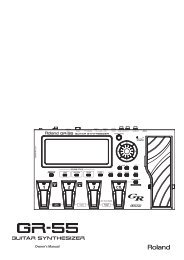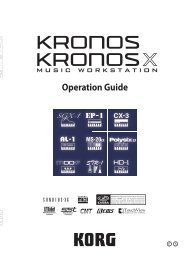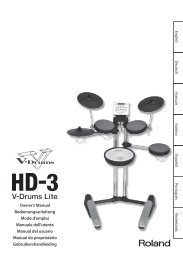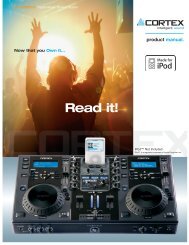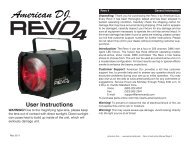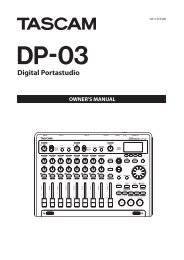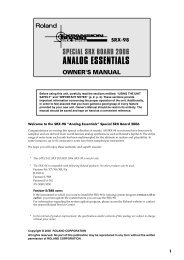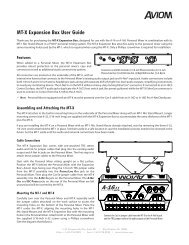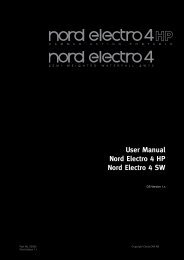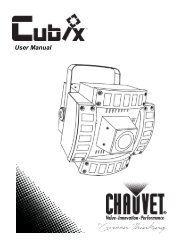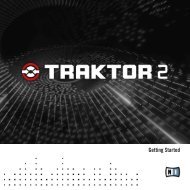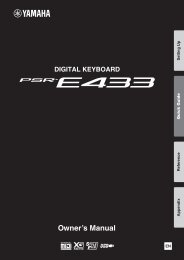SCS.1d - Stanton
SCS.1d - Stanton
SCS.1d - Stanton
Create successful ePaper yourself
Turn your PDF publications into a flip-book with our unique Google optimized e-Paper software.
Appendix - Optimizing Computers for 1394<br />
Appendix<br />
Optimizing Computers for 1394 (FireWire)<br />
When using any computer for live audio applications it is always suggested to perform certain optimizations to ensure<br />
consistent performance. For the most part live audio is not always the highest consideration for both hardware designers<br />
and software programmers. With that being said, <strong>Stanton</strong> has put together this guide and included one of the most widely<br />
used troubleshooting tools (DPC Latency Checker) with the SCS1 to help optimize your computer by performing certain<br />
tweaks, which we have found increases performance and stability substantially.<br />
If you are having issues getting your computer to recognize the SCS.1 controllers then it is suggested to start with the<br />
SidSpeed fix. If you are having issues with audio performance (drop outs) then it is first suggested to perform the following<br />
steps:<br />
• Disable wireless internet devices<br />
• If running Windows on a Mac (Boot Camp), kill the process “KbdMgr.exe”<br />
• Disable ACPI<br />
• Perform DPC checks (below)<br />
• Perform the SidSpeed fix (below)<br />
• Check the brand of 1394 host controller you are using.<br />
Please read the next page about the (DPC) Latency Checker.<br />
DPC (Windows XP-Vista)<br />
During the SCS.1 driver installation process, we are also installing the Deferred Procedure Calls (DPC) Latency Checker.<br />
This useful Windows application not only analyzes how your computer is handling real-time data streams but also helps<br />
you to find the potential cause for drop-outs (interruptions in real-time audio and video stream). In fact, the DPC Latency<br />
Checker will allow you to find out the driver that causes the excessive DPC latencies so then you are able to disable it<br />
through the Windows Device Manager. In other words, using this application will help you to optimize your system so<br />
everything runs smoothly while using the SCS.1 controllers.<br />
Let’s take a look of its main window. (Figure A.1)<br />
31



